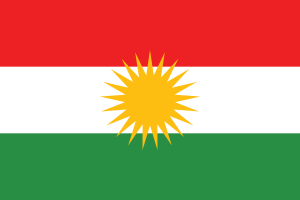Language/Northern-kurdish/Culture/Tourist-Attractions
| ◀️ Means of Transportation — Previous Lesson | Next Lesson — Coordinating Conjunctions ▶️ |
Introduction[edit | edit source]
Welcome to the lesson on "Tourist Attractions" in Northern Kurdistan! In this lesson, we will explore the beautiful and captivating sights that this region has to offer. Northern Kurdistan is known for its rich cultural heritage, stunning landscapes, and historical landmarks. By the end of this lesson, you will have a deeper understanding of the tourist attractions in Northern Kurdistan, allowing you to appreciate the beauty and significance of this remarkable region. So, let's embark on this exciting journey together!
The Rich Cultural Heritage of Northern Kurdistan[edit | edit source]
Before we dive into the specific tourist attractions, it is important to understand the cultural heritage of Northern Kurdistan. With a history dating back thousands of years, this region has been influenced by various civilizations, including the ancient Mesopotamians, Persians, Greeks, Romans, and Arabs. This diverse heritage has left a lasting impact on the architecture, traditions, and customs of the region.
Regional Variations and Historical Significance[edit | edit source]
Northern Kurdistan is divided into several provinces, each with its own unique attractions and cultural nuances. These regional variations are a result of historical events and influences. For example, the province of Duhok is known for its ancient archaeological sites, such as Lalish Temple and the ancient city of Amedi. On the other hand, Sulaymaniyah province is famous for its vibrant art scene and historical sites like the Slemani Museum.
Interesting Fact[edit | edit source]
Did you know that Northern Kurdistan is home to the ancient city of Hasankeyf? This city, with its historical significance and breathtaking views, has been inhabited for over 12,000 years and is currently under threat due to the construction of a dam. It is considered one of the oldest continuously inhabited settlements in the world.
Exploring the Tourist Attractions of Northern Kurdistan[edit | edit source]
Now, let's delve into the specific tourist attractions that Northern Kurdistan has to offer. From natural wonders to historical sites, this region has something to captivate every traveler.
Historical Landmarks[edit | edit source]
Northern Kurdistan is dotted with numerous historical landmarks that showcase its rich past. One such landmark is the Citadel of Erbil, located in the heart of the city of Erbil. This ancient fortress dates back to the 6th millennium BC and has witnessed the rise and fall of several civilizations. Its impressive architecture and panoramic views make it a must-visit attraction.
Another notable historical site is the Great Mosque of Diyarbakir, located in the city of Diyarbakir. This mosque, built in the 11th century, is one of the largest mosques in Turkey and is renowned for its intricate stone carvings and stunning courtyard.
Natural Wonders[edit | edit source]
Northern Kurdistan is blessed with breathtaking natural landscapes that will leave you in awe. One such wonder is the Zagros Mountains, which stretch across several provinces. These majestic mountains offer picturesque hiking trails, stunning waterfalls, and panoramic views of the surrounding valleys.
For those seeking tranquility and relaxation, the Lake Dukan in Sulaymaniyah province is a perfect destination. Surrounded by lush green hills, this pristine lake provides a serene atmosphere for boating, fishing, and picnicking.
Cultural Festivals[edit | edit source]
Northern Kurdistan is known for its vibrant cultural festivals that celebrate the region's heritage. One of the most famous festivals is Newroz, which marks the arrival of spring and the Kurdish New Year. During this festival, people gather to enjoy traditional music, dance, and food, creating a lively and festive atmosphere.
Another notable festival is the Red Flower Festival, celebrated in the city of Amadiya. This festival honors the red tulip, which is considered a symbol of beauty and resilience. The streets of Amadiya are adorned with vibrant red tulips, and locals come together to participate in traditional dances and music performances.
Exercises[edit | edit source]
Now, let's test your knowledge of the tourist attractions in Northern Kurdistan with a few exercises.
Exercise 1: Match the following tourist attractions with their corresponding descriptions:
| Tourist Attraction | Description |
|---|---|
| Citadel of Erbil | A. A pristine lake surrounded by lush green hills. |
| Great Mosque of Diyarbakir | B. An ancient fortress with panoramic views. |
| Lake Dukan | C. One of the largest mosques in Turkey with intricate stone carvings. |
Solution: - Citadel of Erbil: B - Great Mosque of Diyarbakir: C - Lake Dukan: A
Exercise 2: True or False: The Lake Dukan is located in the province of Duhok.
Solution: False. The Lake Dukan is located in Sulaymaniyah province.
Conclusion[edit | edit source]
Congratulations! You have successfully explored the tourist attractions of Northern Kurdistan. This lesson has provided you with a glimpse into the rich cultural heritage and natural wonders of the region. Remember to appreciate and respect the historical significance of these attractions when you visit Northern Kurdistan. Keep exploring, and let your journey through the beauty of this region continue!
Other Lessons[edit | edit source]
Template:Northern-kurdish-Page-Bottom
| ◀️ Means of Transportation — Previous Lesson | Next Lesson — Coordinating Conjunctions ▶️ |

